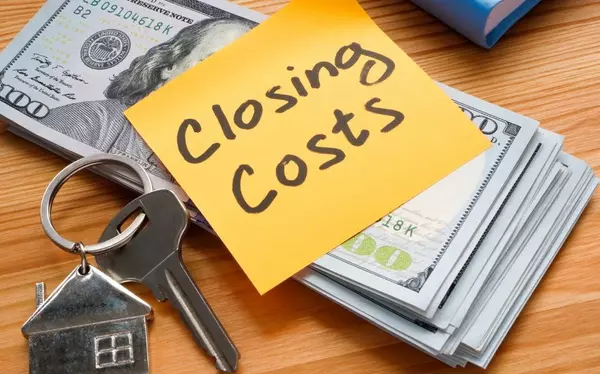How to Protect Yourself from Bad Tenants

How to Protect Yourself from Bad Tenants
Introduction
Screening tenants thoroughly is crucial to avoid similar nightmares. A robust tenant screening process helps identify red flags early, ensuring you select reliable renters who will pay on time and respect your property. Effective screening includes conducting background and credit checks, verifying employment, and speaking with previous landlords. By investing time upfront in the screening process, you can prevent costly and stressful situations, maintaining a smooth and profitable rental experience.
Key Takeaways
- Thorough Screening is Crucial: A robust tenant screening process, including background and credit checks, is essential to avoid problematic tenants.
- Understanding Bad Tenants: Recognize common traits of bad tenants, such as late payments, property damage, and disturbances, and be aware of the financial and emotional toll they can take.
- Pre-Tenancy Measures: Utilize detailed application forms, background checks, personal interviews, and reference verifications to identify reliable tenants.
- Legal and Contractual Protections: Draft comprehensive lease agreements with clear terms, manage security deposits lawfully, and require renter's insurance.
- Monitoring and Communication: Conduct regular property inspections, maintain open communication with tenants, and keep meticulous records of all interactions and transactions.
- Handling Problematic Tenants: Follow legal procedures for warnings, notices, and evictions, and consider mediation services to resolve disputes amicably.
Understanding What Constitutes a Bad Tenant
Definition and Examples: A bad tenant is someone whose behavior or actions negatively impact the landlord, the property, and other tenants. Common characteristics include consistently late rent payments, causing property damage, and creating disturbances. For instance, a tenant who neglects to pay rent on time or at all disrupts the landlord's cash flow and can lead to financial instability. Property damage, whether from negligence or deliberate actions, results in costly repairs and can devalue the property. Disturbances, such as loud parties or illegal activities, not only cause stress but can also lead to complaints from neighbors and potential legal issues.
Consequences of Having Bad Tenants: The repercussions of having bad tenants are multifaceted. Financially, landlords may face significant losses due to unpaid rent and repair costs. The eviction process, which can be lengthy and expensive, often adds to these financial burdens. Emotionally, dealing with problematic tenants can be incredibly stressful and draining. Constant disputes, threats, or even having to navigate legal challenges can take a toll on a landlord's mental well-being. Moreover, bad tenants can consume an inordinate amount of time. Landlords may find themselves frequently visiting the property for inspections, coordinating repairs, and managing disputes, which detracts from focusing on other responsibilities or finding quality tenants. Ultimately, the presence of bad tenants can severely impact a landlord's overall quality of life and business profitability. By understanding these potential issues, landlords can take proactive steps to protect themselves and ensure a smoother rental experience.
Pre-Tenancy Screening Measures
Thorough Application Process: The foundation of protecting yourself from bad tenants begins with a comprehensive application form. This form should gather essential information, including the applicant's employment history, rental history, and references. Employment history provides insight into the tenant's financial stability, while rental history can reveal past behaviors as a renter. Reliable references, especially from previous landlords, are crucial for verifying the applicant’s claims and character.
Background and Credit Checks: Conducting thorough background and credit checks is another critical step. Background checks should cover criminal records and eviction history. These checks help identify any past legal issues or problematic behaviors that could signal future risks. Credit checks, on the other hand, offer a snapshot of the applicant’s financial responsibility. A poor credit score might indicate a history of late or missed payments, while a strong credit score suggests reliability. Interpreting these results accurately can prevent potential financial problems down the road.
Interviewing Prospective Tenants: The interview process allows for a more personal evaluation of the applicant. Prepare a list of questions to gauge their reliability, such as inquiries about their current employment, reasons for moving, and understanding of the lease terms. Watch for red flags like vague answers, inconsistent information, or reluctance to provide details.
Reference Checks: Contacting references is essential for verifying the tenant's background. Ask previous landlords about the applicant's payment history, property care, and overall behavior. Similarly, employers can confirm job stability and income. Be vigilant in identifying fake references by checking contact details and asking specific questions that only a genuine reference could answer.
Legal and Contractual Protections
Comprehensive Lease Agreements: A well-crafted lease agreement is essential for protecting landlords from potential tenant issues. Key clauses to include are late payment penalties, which deter late rent and provide financial compensation if payments are delayed. Maintenance responsibilities should clearly outline the tenant's duties to prevent misunderstandings and ensure proper upkeep of the property. Additionally, occupancy limits prevent unauthorized tenants from residing in the property, which can lead to overcrowding and increased wear and tear. Clear and detailed terms in the lease agreement set expectations from the outset, reducing the likelihood of disputes and ensuring that all parties understand their obligations.
Security Deposits: Security deposits serve as a financial safeguard against property damage and unpaid rent. Landlords should charge an amount that covers potential damages without being excessively burdensome for tenants, typically equivalent to one or two months' rent. Legal guidelines for handling and returning deposits vary by jurisdiction, but generally, landlords must provide an itemized list of deductions and return the remainder within a specified period after the tenant vacates. Adhering to these regulations not only ensures compliance with the law but also fosters a sense of fairness and transparency.
Renter’s Insurance Requirement: Requiring tenants to have renter’s insurance offers significant benefits to landlords. This insurance covers the tenant’s personal property in case of damage or theft and provides liability coverage for accidents that occur within the rental unit. To verify tenant compliance, landlords should request proof of insurance before the lease signing and annually thereafter. By making renter’s insurance a requirement, landlords can mitigate potential liability issues and protect their property more effectively.
Monitoring and Communication
Regular Property Inspections: Conducting regular property inspections is vital for maintaining the condition of your rental property and ensuring tenant compliance with lease terms. Inspections should be scheduled at least quarterly, respecting local laws regarding tenant privacy and proper notice periods. During inspections, landlords should look for signs of property damage, cleanliness, and any unauthorized modifications or occupants. Checking essential systems like plumbing, electrical, and HVAC can help identify issues early, preventing costly repairs.
Maintaining Open Communication: Establishing open communication channels with tenants is crucial for addressing concerns before they escalate. Regular check-ins, whether through email, phone calls, or an online portal, help build a positive landlord-tenant relationship. Encouraging tenants to report issues promptly and responding quickly demonstrates your commitment to their well-being and the property’s upkeep. Effective communication reduces misunderstandings and fosters a cooperative atmosphere.
Documentation and Record Keeping: Keeping detailed records of all interactions and transactions is essential for protecting both landlords and tenants. This includes maintaining logs of communication, inspection reports, payment records, and any maintenance requests or repairs. Detailed documentation provides a clear history that can be invaluable in resolving disputes or legal matters. Tools such as property management software, spreadsheets, and cloud storage solutions can streamline record-keeping processes and ensure data is securely stored and easily accessible.
Handling Problematic Tenants
Warning and Notice Procedures: When dealing with problematic tenants, it’s crucial to issue warnings and notices legally. Begin by reviewing local and state laws to understand the requirements for serving notices. Typically, you must provide written warnings outlining the violation and the expected corrective action within a specified timeframe. Document all violations and communications meticulously, including dates, times, and descriptions of the incidents. Keeping detailed records ensures you have evidence to support your actions if legal proceedings become necessary.
Eviction Process: Understanding the legal eviction process in your jurisdiction is essential for handling problematic tenants effectively. The eviction process usually involves several steps: issuing a formal notice to vacate, filing an eviction lawsuit if the tenant fails to comply, and attending a court hearing. Each step must adhere to specific legal requirements to avoid delays or complications. Familiarize yourself with these steps and consider consulting a legal professional to ensure you follow the correct procedures. A smooth and legal eviction process minimizes the risk of disputes and protects your rights as a landlord.
Utilizing Mediation Services: Mediation can be a valuable tool for resolving disputes with tenants without resorting to legal action. Mediation involves a neutral third party who facilitates discussions between you and the tenant to reach a mutually acceptable resolution. Compared to going to court, this procedure is frequently quicker, less expensive, and less contentious. Mediation can help preserve the landlord-tenant relationship and find solutions that satisfy both parties, reducing the stress and costs associated with legal proceedings.
Conclusion
Protecting yourself from bad tenants requires diligence and proactive measures. By thoroughly screening tenants, understanding the characteristics of problematic renters, and implementing comprehensive pre-tenancy screening measures, landlords can significantly reduce risks. Legal and contractual protections, such as detailed lease agreements and security deposits, provide a solid foundation for tenant relationships. Regular property inspections, maintaining open communication, and meticulous documentation ensure ongoing compliance and address issues promptly. Finally, knowing how to handle problematic tenants through legal procedures and mediation services helps manage disputes effectively. By following these strategies, landlords can create a stable and profitable rental experience.
Categories
Recent Posts










